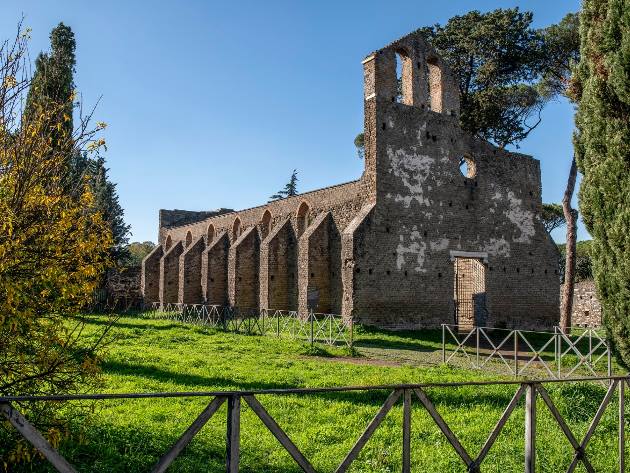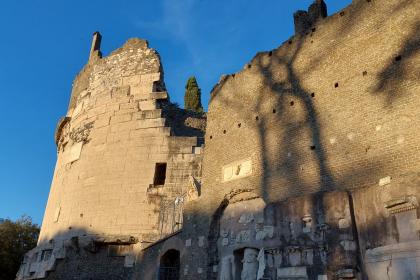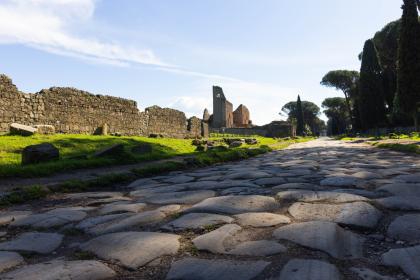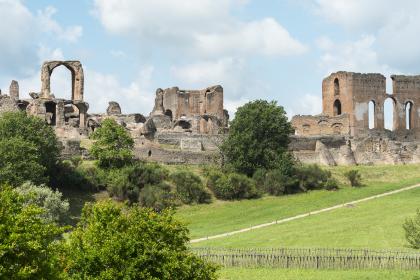
The history of this monument dates back to the early 1300s. Thanks to the intercession of Pope Boniface VIII, the noble Caetani family bought a large estate in Via Appia Antica, where the Mausoleum of Cecilia Metella already stood.
The locality, called Capo di Bove in reference to the frieze with ox skulls that decorates the mausoleum, became a fortified village - castrum - by Francesco Caetani, nephew of the pope. He built an elegant palace, some houses, a church, and walls with two doors and numerous defence turrets.
The church is the only testimony of Cistercian Gothic architecture in Rome. Dedicated to San Nicola di Bari, it was consecrated on 12 May 1303 as a palatine chapel. Without a roof, it has a rectilinear facade with a simple portal, crowned by a marble frame, on which an oculus opens. Above, partially preserved, stands the original bell gable.
On both sides are eight buttresses alternating with six single-lancet windows embellished with trilobate white marble frames and surmounted by pointed arches. The interior has a single nave with a large semicircular apse without openings and protruding on the back front.
Photo: Parco Archeologico dell'Appia Antica Official Facebook
The Mausoleum of Caecilia Metella

 Condividi
Condividi
The Appian Way

 Condividi
Condividi
Villa of the Quintili

 Condividi
Condividi
Information
The building is part of the visiting circuit of the Mausoleum of Cecilia Metella with a single ticket and the same opening hours.
 Condividi
Condividi
Location
To find out about all accessibility services, visit the Rome accessible section.











































